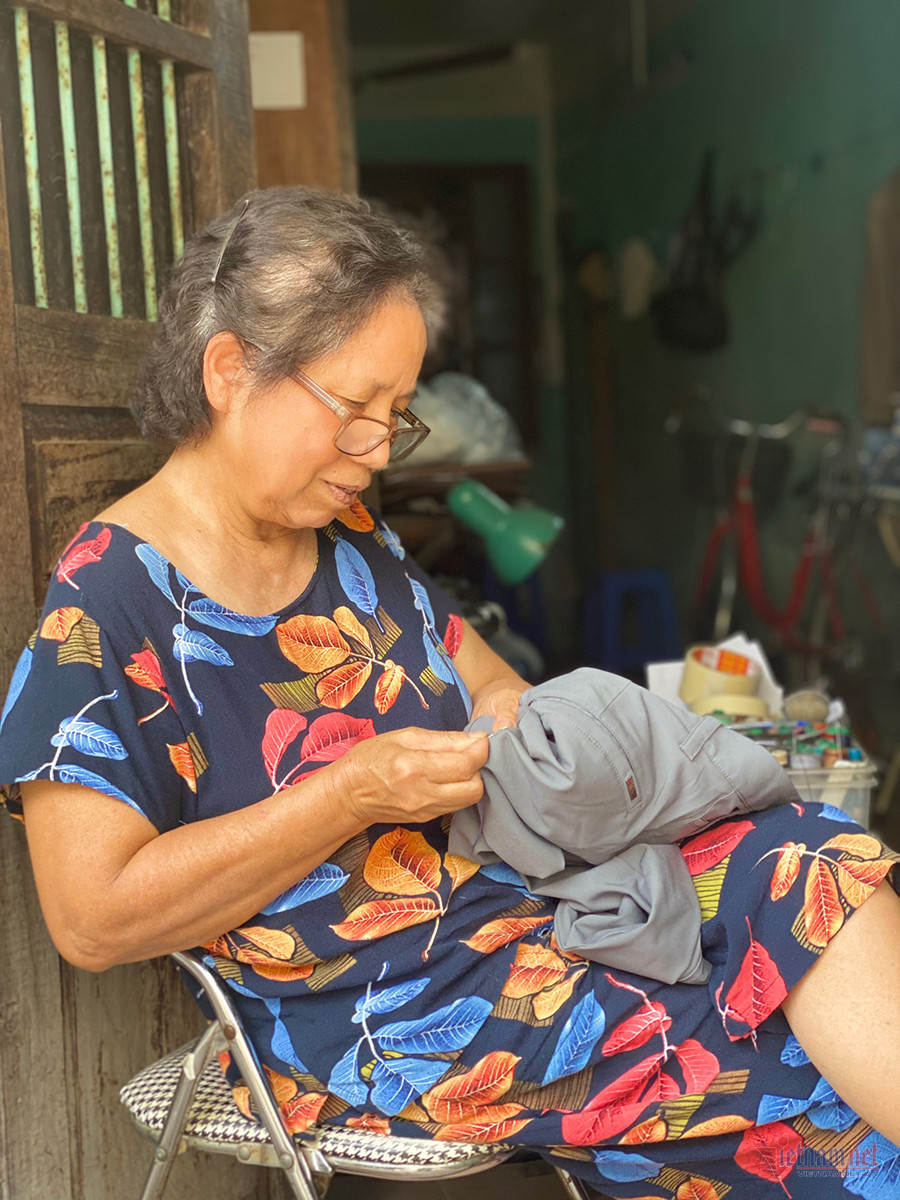
Thanh Mien, the small alley on Quoc Tu Giam street in Dong Da district in Hanoi, was once famous for invisible mending, gathering the best craftspeople in the field. They could mend clothes from fibers taken from the clothes themselves. No one could detect that the clothes had been mended and repaired.
But fewer people come to the small alley now and the profession is no longer common. Today, people would rather buy new clothes if clothes are torn than have their closes mended.
However, Hong has never thought of giving up the craft she learned from her mother in law. She is one of a few craftspeople who still keep the business today.
Every day, at 8 am, in a small house with old wooden entrance doors, Hong, with her eyeglasses, begins her working day, mending torn clothes and fabric with her skillful hands before giving the items back to her clients.
She works until 5 pm, when she begins to do housework and cooking.
Hong said that she is grateful to her mother in law, who taught her the craft, which has allowed her to earn a living and raise her children after getting married at 27 years old.
Hong said her mother in law, Ta Hue Diep, was extremely skillful, with a good nature, and meticulous. Diep had been doing this work for many years, until she turned 83 years old and her eyesight weakened. Besides Hong, Diep’s two daughters also learned the craft from their mother.
For many years, the family earned their living with mending. After Diep officially stopped working, Hong took over the business and has been working at the small house in Thanh Mien alley.
“Mending means using fibers on torn clothes and patching the torn places. As I use the fibers of the same clothes, no one can find the tears and clothes look brand new. You need to be very meticulous and patient to learn the craft,” she said.
“It took me several years to become proficient in mending,” she recalled.
“At first, I often made mistakes and my mother in law had to fix the problems for me. Sometimes, the needle poked my hands and caused bleeding, but I did not give up. I learned from my mistakes and became more professional,” she said.
Though this is labor of great difficulty, her set of tools just comprises needles, thread, scissors and an iron. Hong said if tears are too large, or the fabric is too thin, it will be very difficult to do invisible mending. Sometimes she has to refuse orders because she is not sure if she can satisfy clients’ requirements.
Over the last 45 years, Hong has been creating products that satisfy clients. It is not by chance that the name ‘Hong sang soi’ (Hong mending) is so famous. Her needlework is so skillful, it has become a well known brand.
Though demand for invisible mending has decreased, Hong still keeps working. She understands that her mother law, when teaching her the craft, wanted to prepare a livelihood for her and family members, and to protect the family’s traditional occupation.
To many people’s surprise, Hong is not only known among Hanoians but also expats and foreign travelers.
“I have many foreign clients. We communicate with each other via smartphone. One time, I told the client that the fee was VND20,000, but the client insisted and paid VND50,000 because she said the mending was so beautiful and professional, and she was fully satisfied,” Hong said.
Luong Van Diep, 71, who lives on Hang Bong street, near her home, often comes to ask Hong to help mend his clothes. He always is satisfied after getting back the clothes.
“You may think that only poor people want to have their clothes mended, and wealthy people never come to see me. But this is wrong. Wealthy people have luxurious clothes and don’t want to throw away the clothes if tears appear. Invisible mending skills can help them hide the tears,” Hong explained.
“Other people who wear clothes worth just hundreds of thousand of dong won’t have their clothes mended. Instead, they buy new things,” she said.
Tu Linh